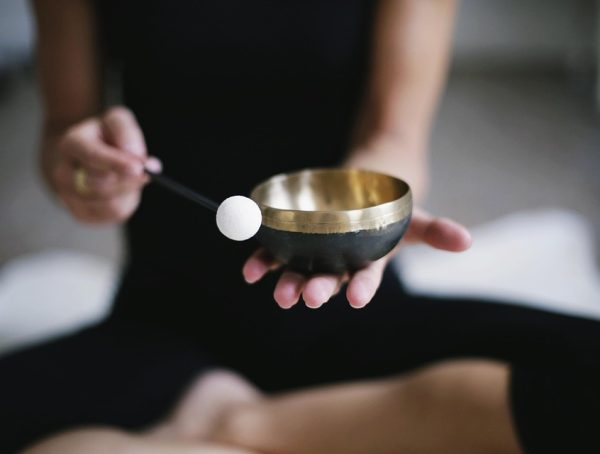5 Common Myths About Mindfulness Meditation Debunked
Mindfulness meditation has gained significant popularity in recent years, hailed as a remedy for stress, anxiety, and even physical ailments. Yet, despite the widespread recognition of its benefits, misconceptions about mindfulness meditation continue to persist. In this article, we will explore five common myths about mindfulness meditation, debunking them to help individuals understand its true nature and benefits. Additionally, we will provide actionable steps for integrating mindfulness into daily life effectively.
Myth 1: Mindfulness Meditation Requires Years of Practice
Debunked: One of the most prevalent myths is that mindfulness meditation requires years of dedicated practice to be effective. While it’s true that like any skill, practice enhances your ability, you don’t need to be a seasoned pro to reap the benefits.
Action Steps:
- Start with just five minutes a day. Sit in a comfortable position, close your eyes, and focus on your breath. Gradually increase the time as you become more comfortable.
- Use guided meditation apps or online resources to help you ease into the practice.
Myth 2: Mindfulness Means Emptying Your Mind
Debunked: Many believe that to meditate mindfully, one must completely empty their mind of thoughts. In reality, mindfulness is about acknowledging thoughts as they arise without judgment rather than resisting or trying to eliminate them.
Action Steps:
- When thoughts come to mind during meditation, notice them, and gently bring your focus back to your breath or another anchor. This practice will help you build a healthier relationship with your thoughts.
- Engage in mindful activities such as walking or eating, where you can observe your thoughts without the pressure of a formal meditation session.
Myth 3: Mindfulness Meditation Is Only for Relaxation
Debunked: While mindfulness meditation does promote relaxation, reducing stress is just one of its many benefits. Research shows that mindfulness can improve focus, emotional regulation, and even physical health.
Action Steps:
- Explore mindfulness techniques in varied contexts: practice mindful listening during conversations or mindful observation during nature walks.
- Incorporate mindfulness into challenging tasks, such as studying or working on a project; begin by dedicating a few minutes to center yourself before diving into the task.
Myth 4: Mindfulness Meditation Is a Religious Practice
Debunked: Although mindfulness has roots in Buddhist practice, it is not inherently religious. It is a secular practice that can benefit anyone, regardless of their belief system. The principles of mindfulness can be employed in various philosophical or psychological frameworks without religious connotations.
Action Steps:
- Learn about the secular foundations of mindfulness, such as those discussed in Jon Kabat-Zinn’s "Full Catastrophe Living" or Thich Nhat Hanh’s works.
- Join local or online groups focused on secular mindfulness practices to connect with others who share your interest.
Myth 5: Mindfulness Meditation Will Solve All Your Problems
Debunked: While mindfulness meditation can enhance mental and emotional well-being, it is not a cure-all. It is a complementary practice that, when combined with other healthy lifestyle choices, can significantly improve quality of life.
Action Steps:
- Set realistic expectations for your mindfulness practice. Understand it’s an ongoing journey that takes time to manifest noticeable changes.
- Pair mindfulness meditation with other self-care practices, such as regular exercise, healthy eating, and therapy, to create a balanced approach to well-being.
Conclusion: Cultivating Mindfulness in Daily Life
Debunking these myths can help you approach mindfulness meditation with an open mind and realistic expectations. By incorporating small, manageable practices into your daily life, you can experience the profound benefits of mindfulness meditation. Remember, the journey toward mindfulness is personal and unique to each individual.
Consider starting your day with a simple mindful reflection or dedicating a few moments in the evening to a gratitude practice, promoting a mindful approach to life in and out of meditation.
By actively engaging with mindfulness, you can develop a deeper awareness of your thoughts, feelings, and surroundings, paving the way for a more fulfilling life.
“Take care of your body. It’s the only place you have to live.” — Jim Rohn
If you found value in this article and would like to explore more about mindfulness and wellness, follow Kevin on Instagram (@KSteineman) for daily inspiration and practical tips on living your best life.
You might also like
More from Meditation
The Role of Mantras in Transcendental Meditation: A Deep Dive
The Role of Mantras in Transcendental Meditation: A Deep Dive Transcendental Meditation (TM) has garnered a significant following across the globe, …
The Science Behind Meditation: Improving Mental Health Naturally
The Science Behind Meditation: Improving Mental Health Naturally In today's fast-paced world, the pursuit of mental wellness has become paramount. Thousands …
Understanding the 7 Types of Meditation for Beginners
Understanding the 7 Types of Meditation for Beginners: A Path to Inner Peace Meditation has become a popular practice in recent …


































